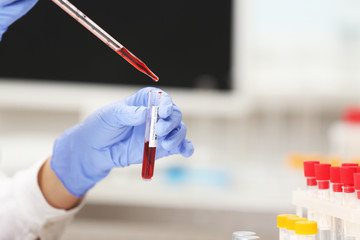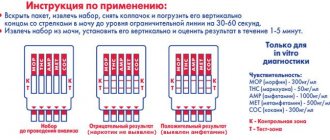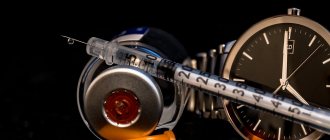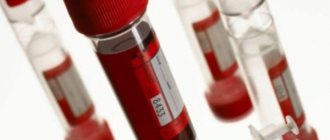When is the test ordered?
Cortisol testing is called a marker of the level of activity of the hypothalamus, pituitary gland and adrenal glands.
A doctor may prescribe a similar test for patients with:
- Numerous and progressive symptoms, which are characteristic of Itsenko-Cushing's disease. As a rule, these are signs of obesity, persistent high blood pressure, increased blood sugar, neuromuscular disorders, increased hairiness (applies to women), increased blood volume, increased trauma to the skin and soft tissues.
- Atypical clinical symptoms for the patient’s age: persistently elevated blood pressure, chronic skeletal diseases.
- Formation of the adrenal glands.
A test for cortisol levels may be prescribed to children who have severe growth retardation and to patients to determine the nature of adrenal insufficiency.
What is cortisol?
The hormone is necessary for the human body in order to adequately tolerate stress and quickly recover from it. Cortisol received the title of “stress hormone” for the formation of defensive reactions to external threats and stressful situations. It increases heart rate and increases blood pressure.
An increase in the hormone is observed both during emotional stress and during physical overload. At times of stress, the hormone in the body is responsible for the following functions:
- maintaining concentration,
- improving brain nutrition,
- improvement of protein synthesis,
- maintaining normal heart function,
- maintaining normal vascular function,
- accumulation of glycogen in the liver.
The substance also reduces the absorption of calcium by bones, which to some extent increases their elasticity, reducing fragility.
Deviations of the hormone from the norm lead to serious disturbances throughout the body, and it especially affects the female reproductive system, causing its inability to function properly. In addition, against the background of hormonal imbalance, the development of dangerous conditions such as heart attack and stroke may occur.
How to Prepare for a Cortisol Blood Test
In order for the test results to be more accurate, it is necessary to properly prepare for the procedure. The day before the test, the patient must avoid smoking and any physical activity. A week before the test, you should stop taking hormonal medications after consulting your doctor. Otherwise, the results will be considered unreliable.
The time for taking the analysis is morning. Blood is taken from the patient's antecubital vein. The manipulation is carried out on an empty stomach.
If, based on the test results, experts determine that the level of cortisol in the blood is within normal limits, then the complaints are not related to the functioning of the adrenal glands. Otherwise, cortisol is a destroyer and threatens your health. In case of elevated levels of this hormone, doctors can give several recommendations, for example:
- lose weight (for overweight patients);
- Avoid drinks containing high levels of caffeine;
- exclude alcoholic drinks;
- add more protein to your diet.
With elevated cortisol levels, a person must improve their sleep - in such cases it is important to get enough sleep. In each case of deviation from the norm, the doctor looks for the cause and makes prescriptions.
Symptoms of reduced cortisol in the body
If the hormone is reduced for some time, the patient develops symptoms of this disorder that cannot be ignored. Most often, the manifestations of this pathology are as follows:
- severe weakness of all muscles of the body,
- stomach ache,
- significant decrease in blood pressure,
- loss of body weight without changing diet or additional physical activity.
In cases where the level of the hormone is in a reduced state for a long time, adrenaline shock develops when a stressful situation occurs. At this time, the person needs immediate help. If you have symptoms of cortisol deficiency, it is mandatory to take hormone tests.
Cortisol (saliva, 4 portions) (HPLC)
Cortisol
- a steroid hormone that is involved in the hormonal regulation of the body in stressful situations. Cortisol is secreted by the zona fasciculata of the adrenal cortex. Release is controlled through a classic negative feedback loop involving corticotropin-releasing factor from the hypothalamus and adrenocorticotropic hormone (ACTH) from the pituitary gland. The hormone is present in the blood in a bound form. The synthesis of transport proteins in the blood is increased by estrogens, therefore, during pregnancy and taking estrogen-containing blood products, the total fraction of the hormone concentration increases.
The circadian rhythm varies throughout the day, with a maximum occurring in the morning hours from 8 to 10 am.
Hormone functions:
- participates in the development of adaptive reactions to stress, including physical stress;
- regulates blood pressure;
- affects the metabolism of carbohydrates and lipids;
- participates in the regulation of sodium and potassium;
- stimulates protein biosynthesis in the liver.
An increase in cortisol levels is observed in Cushing's disease and syndrome and is accompanied by the development of obesity with the formation of red-violet stretch marks on the skin, arterial hypertension, impaired glucose tolerance, and menstrual irregularities.
Cushing's disease is the most common cause of cortisol hyperproduction, associated with hypersecretion of ACTH by pituitary microadenoma. Itsenko-Cushing's disease is characterized by increased production of cortisol and loss of the normal daily rhythm of its secretion (normally, cortisol secretion decreases in the evening). An increase in cortisol can be detected with hypothyroidism, uncompensated diabetes mellitus, stress, pain, and fevers. Studying the level of cortisol in saliva collected at 23.00 is the most comfortable for the patient and a fairly accurate screening test for endogenous hypercortisolism. Saliva collection using a special device can be performed by the patient at home; the technique is non-invasive and painless, which minimizes the likelihood of stress. The concentration of cortisol in saliva reflects the level of free cortisol in the blood, since cortisol-binding proteins are not released into saliva. The test is applicable when examining women taking hormonal contraceptives.
When screening, at least two first-line tests are warranted. If the results of two tests diverge, additional studies are indicated. If both tests are negative, a diagnosis of Cushing's disease is unlikely.
If elevated cortisol levels are detected, functional causes of hypercortisolism should be excluded. Assessments related to the circadian biological rhythm of cortisol are not informative in people who work night shifts and/or frequently cross time zones.
Indications
It is advisable to carry out an examination to exclude endogenous hypercortisolism in patients of the following groups:
- young people with unusual manifestations for their age (osteoporosis, diabetes mellitus, obesity, arterial hypertension, amenorrhea in women, decreased libido in men, rapid weight gain combined with severe general and muscle weakness);
- patients with characteristic changes in appearance and various clinical manifestations of hypercortisolism;
- children who experience growth retardation combined with weight gain;
- patients with incidentally discovered adrenal tumors;
- patients of any age with poorly controlled diabetes mellitus and/or hypertension in combination with obesity or rapid weight gain;
- patients with vertebral fractures, especially multiple fractures, under the age of 65 years.
Preparation
For the study, you need to collect 4 portions of saliva into SaliСaps containers. Please note that containers must not contain a tampon. Saliva collection containers can be collected in advance from the medical office. Indicate on the sticker the date and time the sample was taken. Place the sticker on the test tube.
Portions of saliva are collected at the following time intervals:
- 1 serving (from 6.00 to 10.00);
- 2 servings (from 10.00–14.00);
- 3rd portion (from 14.00–20.00);
- 4 servings (from 20.00–24.00).
The day before taking the sample, you should avoid drinking alcohol, caffeine, or alcohol.
Do not smoke for one hour before saliva collection. 30 minutes before collection - refrain from eating or chewing gum; Do not floss or brush your teeth. Ten minutes before collecting saliva, rinse your mouth with water. It is not advisable to conduct a study while taking sedatives, cortisone acetate, estrogens, oral contraceptives and glucocorticoid drugs, including ointments, since there is a high probability of increasing cortisol levels. Discontinuation of medications is carried out strictly on the recommendation of the attending physician.
Saliva collection
- Open the cap of the saliva collection tube.
- Fill the test tube through the tube to the mark.
- Close the tube tightly.
Collecting a portion of saliva in several doses is prohibited.
Do not cough while collecting saliva. It is unacceptable for sputum to enter the tube containing the saliva sample. Before shipping, store the biomaterial in the refrigerator at 2–8°C. The material must be delivered to the medical office on the day of collection. If immediate delivery to a medical office is not possible, the tube can be stored at +2 – +8°C for no more than 24 hours.
Interpretation
*Threshold applies to both individuals with normal body mass index and obese patients. Note: Reference values may depend on the test method.
Increasing values:
- Itsenko-Cushing syndrome (approximate sensitivity of the method in detecting endogenous hypercortisolism is 90%, specificity is 90%);
- functional causes of hypercortisolism (including depression or other serious psychiatric pathology; alcoholism; stress associated with hospitalization, surgery, pain, etc.; severe malnutrition, severe malabsorption; exhausting intense training);
- Iatrogenic hypercortisolism associated with the use of glucocorticoids.
Reducing values:
- Addison's disease;
- VDKN;
- hepatitis, liver cirrhosis;
- taking glucocorticoids.
How is the analysis performed?

Material for cortisol is collected from a vein between 7 a.m. and 10 a.m. The whole procedure takes no more than 10 minutes. After it, a person can immediately eat and return to normal activities. An endocrinologist deciphers the indicators. If a deviation of cortisol to a greater or lesser extent is detected, the patient is prescribed an additional examination, based on the results of which the most effective method of therapy is determined.
Indications for testing
There are not many patients from risk groups who need to be tested, but due to worsening environmental conditions, their number is steadily growing.
- patients with suspected Itsenko-Cushing syndrome;
- patients with suspected Addison's disease;
- young people with uncharacteristic age-related changes (rapid weight gain, diabetes mellitus, amenorrhea, weakness, fatigue, stretch marks (purple stretch marks) on the abdomen);
- patients with adrenal dysfunction;
- children with stunted growth and predisposition to obesity.
If you fall into one of these categories, do not delay visiting your doctor. We will advise you on all questions and prescribe all the necessary tests.
How to properly test saliva for cortisol
After following all the recommendations, you can proceed directly to the analysis.
Saliva should be collected in a calm state so that the level of anxiety and stress does not change the data.
- Carefully open the cap of the tube without removing the cotton swab.
- Tilt the tube so that the swab falls into the oral cavity. Attention - do not touch the cotton swab with your hands!
- Chew the tampon gently for 2-3 minutes until it is completely saturated with saliva.
- Place the swab back into the tube, also avoiding contact with your hands.
- Close the tube cap tightly and record the time.
Attention! The test tube can be stored in the refrigerator at a temperature of +2...+8°C for no more than 12 hours. After collecting saliva, we recommend that you return the container to the clinic as soon as possible.
On what day of the cycle should I take the test?
For men, it does not matter on what days to take the test, while for a woman of childbearing age, she must undergo the examination strictly at a certain time.
A cortisol test (when to take it and on what day of the cycle) will be prescribed by a doctor for a woman who needs to be examined. This is due to the characteristics of the female body. The hormone changes depending on what phase of development the egg is in, and therefore it is important to know exactly what day of the cycle to take the test. The optimal time is considered to be the period from 3 to 7 days, although the delivery of material for research can also occur during the entire follicular and luteal periods, when cortisol changes slightly. For this reason, when referring women to donate blood, the doctor certainly asks them about the start and end dates of the cycle. If there are serious disturbances in the cycle - dysmenorrhea, a repeat test may be required.







